
The Capital Order
The Capital Order
How Economists Invented Austerity and Paved the Way to Fascism
Clara E. Mattei
The University of Chicago Press
Chicago and London
The University of Chicago Press, Chicago 60637
The University of Chicago Press, Ltd., London
2022 by The University of Chicago
All rights reserved. No part of this book may be used or reproduced in any manner whatsoever without written permission, except in the case of brief quotations in critical articles and reviews. For more information, contact the University of Chicago Press, 1427 E. 60th St., Chicago, IL 60637.
Published 2022
Printed in the United States of America
31 30 29 28 27 26 25 24 23 22 1 2 3 4 5
ISBN-13: 978-0-226-81839-9 (cloth)
ISBN-13: 978-0-226-81840-5 (e-book)
DOI: https://doi.org/10.7208/chicago/9780226818405.001.0001
Library of Congress Cataloging-in-Publication Data
Names: Mattei, Clara E., author.
Title: The capital order : how economists invented austerity and paved the way to fascism / Clara E. Mattei.
Description: Chicago : University of Chicago Press, 2022. | Includes bibliographical references and index.
Identifiers: LCCN 2022005299 | ISBN 9780226818399 (cloth) | ISBN 9780226818405 (ebook)
Subjects: LCSH: CapitalismGreat Britain. | CapitalismItaly. | Stagnation (Economics) | FascismGreat Britain. | FascismItaly.
Classification: LCC HB501 .M38 2022 | DDC 330.12/2dc23/eng/20220214
LC record available at https://lccn.loc.gov/2022005299
 This paper meets the requirements of ANSI / NISO Z39.48-1992 (Permanence of Paper).
This paper meets the requirements of ANSI / NISO Z39.48-1992 (Permanence of Paper).
To Gianfranco Mattei and revolutionaries everywherepast, present, future
Contents
In March 2020, during the earliest days of the COVID-19 pandemic, the Democrat governor of New York, Andrew Cuomo, announced plans to slash Medicaid spending to hospitals by $400 million as part of his state budget. It was a shocking announcement: on the threshold of a pandemic, one of the countrys most high-profile politicians was informing the public that he planned to underpay hospitals caring for New Yorks poorest and most vulnerable. We cant spend what we dont have, Cuomo explained with a shrug in a press conference. These cuts were expected to go deeper in the following years, with similar cuts to come for the states public schools.
In October 2019, following an announced increase in the subway fare for citizens of Santiago, Chile, citizens flooded the streets in protestnot only because of transit concerns, but in response to the cumulative public toll of fifty years of privatization, wage repression, cuts in public services, and marginalization of organized labor that had fundamentally hollowed life and society for millions of Chileans. With hundreds of thousands demonstrating in the streets, Chiles government responded with dictatorship-style martial law, including a series of deeply unsettling displays of police force that spanned weeks.
On July 5, 2015, 61 percent of voters in Greece passed a referendum to oppose a bailout plan from the International Monetary Fund and the European Union that was proposed to address Greeces sovereign debt crisis. Eight days later, and in spite of the public referendum, the Greek government signed an agreement anyway, settling on a three-year bailout loan that limited how the country could spend money on its people: Greece had to impose more pension reductions, increase its consumption taxes, privatize services and industries, and implement a pay cut for the countrys public employees. Two years later, the Greek government privatized the countrys ten main ports and put many of its islands up for sale.
It is a trope of twentieth- and twenty-first-century life that governments faced with financial shortfalls look first to the services they provide their citizens when making cuts. Instances like these are innumerable and span every country in the world. When this happens, they produce highly predictable, uniformly devastating effects on societies. Call it the austerity effect: the inevitable public suffering that ensues when nations and states cut public benefits in the name of economic solvency and private industry. While austerity policies may not be identified by name, they underscore the most common tropes of contemporary politics: budget cuts (especially in welfare expenditures such as public education, health care, housing, and unemployment benefits), regressive taxation, deflation, privatization, wage repression, and employment deregulation. Taken together, this suite of policies entrenches existing wealth and the primacy of the private sector, both of which tend to be held up as economic keys that will guide nations to better days.
Americans have seen these policies repeated by governments at every level. Attacks on unions have decimated workers collective bargaining rights; minimum wages languish at poverty levels; laws allow employers to enforce non-compete clauses that bar certain workers from changing jobs in pursuit of better pay;
Austerity is not new, nor is it a product of the so-called Neoliberal Era that began in the late 1970s. Outside, perhaps, of the less than three booming decades that followed World War II, austerity has been a mainstay of modern capitalism. It has been true throughout history that where capitalism exists, crisis follows. Where austerity has proven wildly effective is in insulating capitalist hierarchies from harm during these moments of would-be social change. Austerity is capitalisms protector, popular among states for its effectiveness and billed as a means of fixing economies by increasing their efficiencyshort-term readjustments for long-term gains.
In his famous book Austerity: The History of a Dangerous Idea, the political scientist Mark Blyth shows that although austerity has not worked in the sense of achieving its stated goals across history (e.g., reducing debt or boosting economic growth), it has nonetheless been employed by governments over and over again. Blyth refers to this pattern of compulsive repetition as a form of madness. However, if we view austerity in this books termsas a response not just to economic crises (e.g., contraction of output and heightened inflation), but to crises of capitalismwe can begin to see method in the madness: austerity is a vital bulwark in defense of the capitalist system.
When I refer to a crisis of capitalism, I do not mean an economic crisissay, a slowdown in growth or an uptick in inflation. Capitalism is in crisis when its core relationship (the sale of production for profit) and its two enabling pillars (private property in the means of production and wage relations between owners and workers) are contested by the public, in particular by the workers who make capitalism run. As part of these expressions of unhappiness, people have historically demanded alternative forms of social organization. Indeed, and as this book will demonstrate, austeritys primary utility over the last century has been to silence such calls and to foreclose alternatives to capitalism. Mostly austerity serves to quash public outcry and worker strikesnot, as it is often advertised, to spontaneously improve a countrys economic indicators by practicing greater economic discipline.
Austerity as we know it today emerged after World War I as a method for preventing capitalisms collapse: economists in political positions used policy levers to make all classes of society more invested in private, capitalist production, even when these changes amounted to profound (if also involuntary) personal sacrifices. In the early 1920s, austerity functioned as a powerful counteroffensive to strikes and other forms of social unrest that exploded on an unprecedented scale after the wara period traditionally, and oddly, overlooked by political and economic scholars who study austerity. The timing of austeritys invention reflects its animating motivations. Of greater importance than austeritys purported economic efficacy was its ability to guard capitalist relations of production during a time of unprecedented social organizing and public agitation from working classes.
Next page
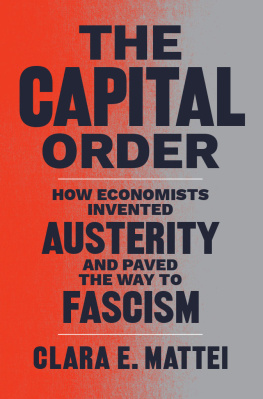

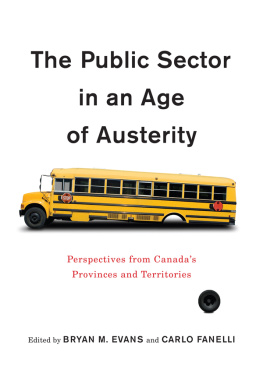
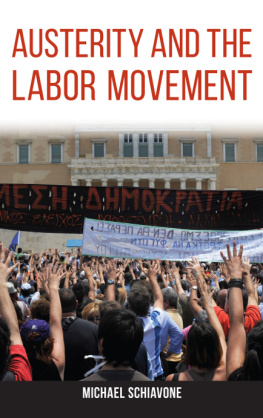
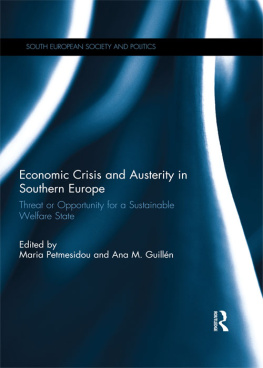
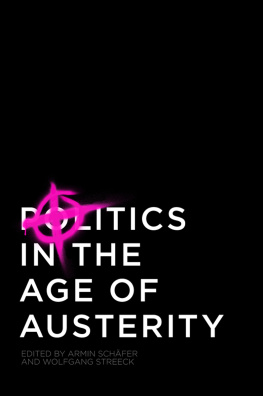
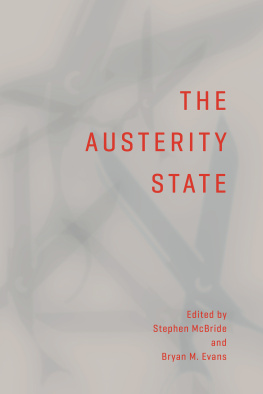


 This paper meets the requirements of ANSI / NISO Z39.48-1992 (Permanence of Paper).
This paper meets the requirements of ANSI / NISO Z39.48-1992 (Permanence of Paper).